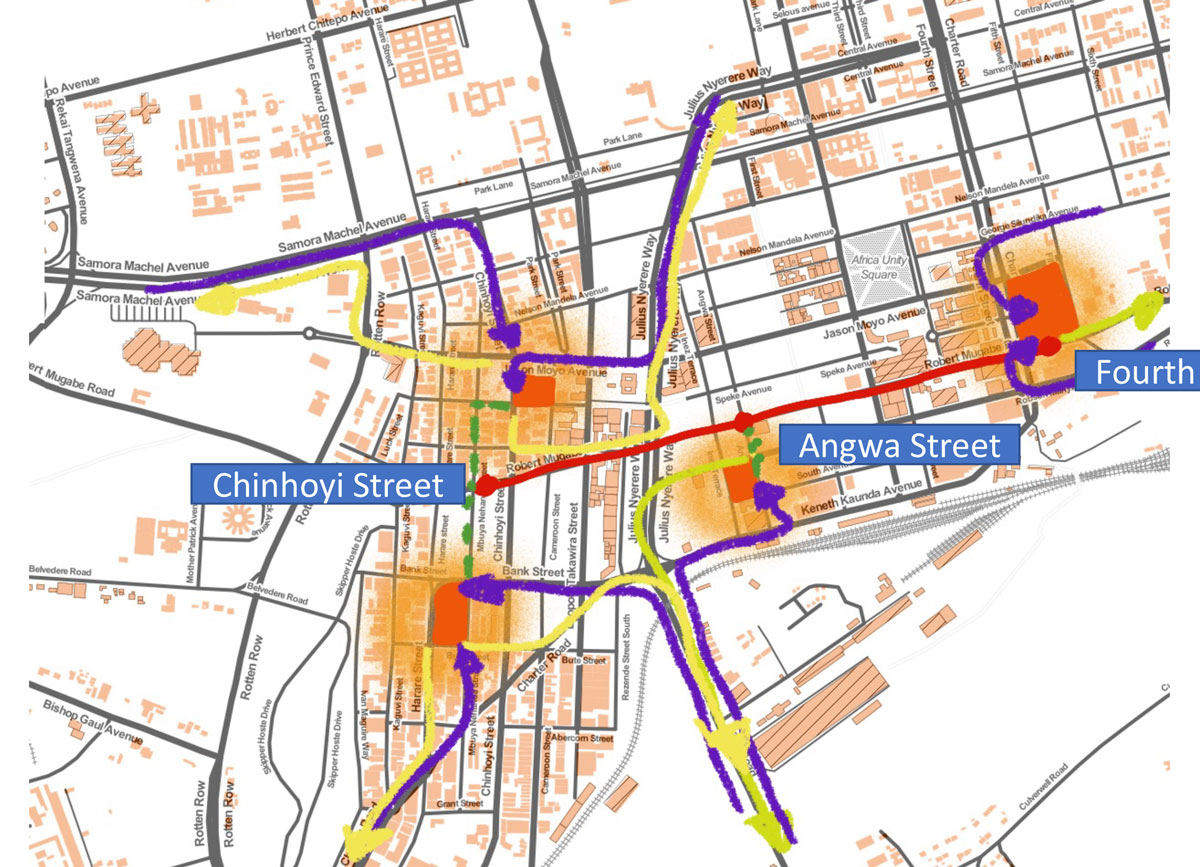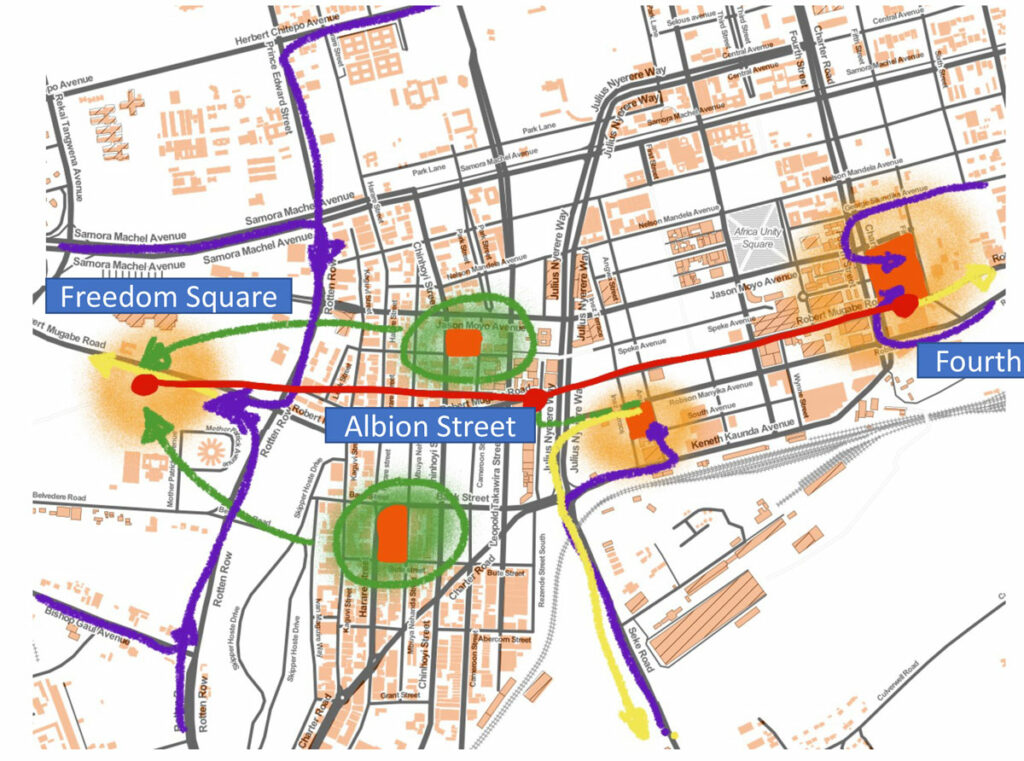
Cities, SI Urban 1/2023
HARARE: THE POTENTIAL OF URBAN CABLE CARS IN AFRICA
Like many African cities, Harare is drowning in the congestion of cars, shared taxis, bicycles, lorries and pedestrians. A large proportion of the 2.9 million residents in the conurbation of Harare commutes to the city centre from the suburbs.
The public transport mainly consists of 14-seater buses, which serve four central stations. Because of road congestion, access to the city centre is prohibited. From here, small cars provide transport – which strangely results in even more congestion.
To compound the problems, owing to a lack of interconnections for almost all journeys, people have to pass through the centre to change from one bus route to another. The consequences of the lacking and deficient transport policy are traffic jams, chaos on the roads, economic losses and low quality of life.
As in many places in the world, however, urban cable cars could also be a part of the solution in Harare – Matthias Nüßgen from the European Institute for Sustainable Transport (EURIST) is convinced. To what extent is something that he demonstrated in a presentation at trade fair Cable Car World.
Route 2
Route 2 helps both commuter and city-centre traffic.
Photos: Nüßgen

Potential and routes
Together with consulting company Cable Car Solutions (CCS), his team conducted a concept study for the Zimbabwean capital. Initially, the traffic situation was analysed: as suspected, the starting points of journeys analysed lie mainly in the peripheral areas of the city, but the destinations are mainly in the central
zones.
“We then calculated the transport development potential and compared two alternative cable car routes,” Nüßgen reports.
The cable car through the centre was designated the “Red Line”. Route 1 begins in Fourth Street and runs across Angwa Street to Chinhoyi Street. The distance between the three stations is 600 or 700 metres, so it is not too far to go on foot – which makes the cable car less useful.
“Route 1 does solve the traffic problem in the centre, but not the mobility to get there,” Nüßgen says.
Yet the cable car would offer urban development potential along Robert Mugabe Road, especially for small businesses that are already located along the corridor.
Route 2 likewise begins in Fourth Street and crosses Albion Street to the transport hub at Freedom Square. The distances between the three stations are around a kilometre and therefore beyond walking distance.
“Route 2 resolves the traffic problem both in the centre and on the way there. We therefore recommend this variant of the line,” Nüßgen explains.







